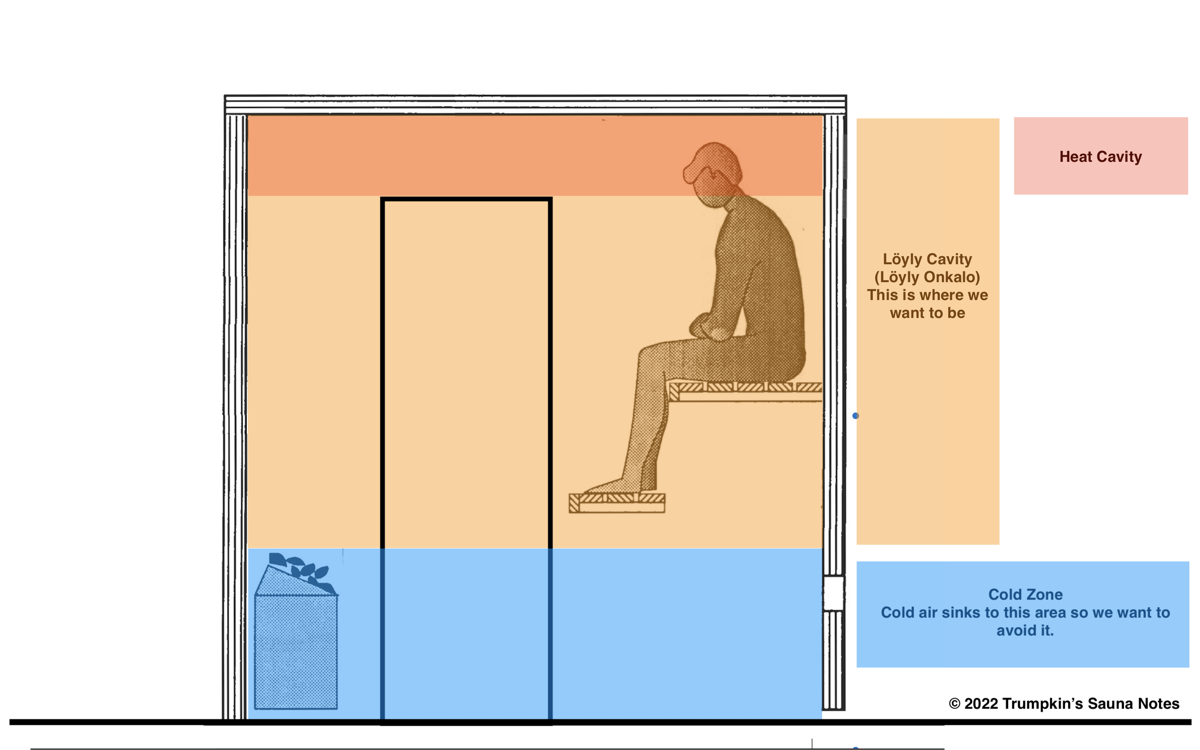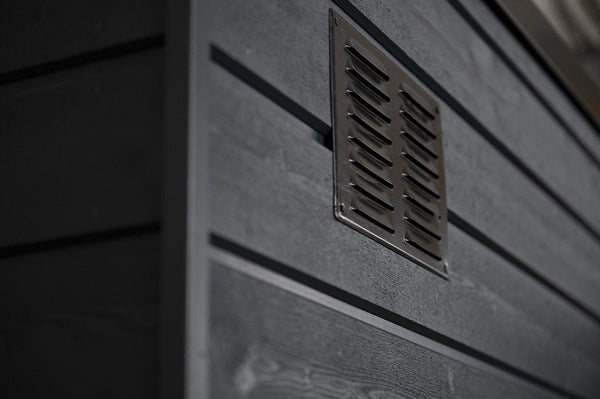
For centuries, saunas have been used around the world as a way to promote relaxation, detoxification, and overall wellbeing. Their intense dry heat penetrates deep into muscles and joints, soothing aches and pains while inducing a deeply calming effect.
In recent years, personal backyard saunas have grown tremendously in popularity. Rather than visiting a gym or spa, more and more people are opting to install saunas right in their own backyards. This allows them to reap the many benefits of saunas privately at their leisure and convenience.
When it comes to backyard saunas, there are two predominant shapes available: the classic square design or the uniquely rounded barrel sauna. Both offer that intense dry sauna heat people have come to know and love. However, there are some key differences in how they work, their costs, and installation requirements.
By exploring the pros and cons of barrel saunas vs. square saunas, you’ll be better equipped to select the right backyard sauna for your needs. Keep reading as we break down the major points of comparison in the great barrel sauna vs square sauna debate.
How efficiently a sauna holds in heat and how well air circulates within are two critical factors in the sauna experience. This determines how quickly it heats up, how consistently hot it stays, and how comfortable it feels inside.
In this arena, barrel saunas tend to perform better due to their continuous curved walls which have less surface area for heat transmission and a lower internal capacity to heat. The absence of corners also allows for heat to stratify at the top of the sauna to reach very high temperatures quickly.
Cabin saunas on the other hand allow for better circulation of heat throughout the sauna and often have higher benches resulting a more even heating of the body.

For most DIY sauna kits, insulation is not included as this adds an additional level of complexity to the construction and would dramatically increase the costs. That said, properly insulating a sauna helps retaining heat energy inside a sauna where it should remain. Any heat that escapes through poorly insulated walls is wasting the energy required to generate that dry sauna heat.
Here the classic square sauna design has a leg up, as it more easily accommodates additional insulation within its straight walls, ceilings, and floors. Extra fiberglass, rock wool, or rigid foam insulation can be added seamlessly to enhance heat retention.
With barrel saunas, retrofitting insulation poses more of a challenge given the curved shape which lacks flat surfaces and right angles. Any insulation would likely need custom fitting, driving up material and labor costs.
So for better built-in insulating ability, square saunas are typically the superior choice.
When installing a backyard sauna, ease of assembly is an important logistical consideration. Complicated designs requiring intricate construction are more prone to assembly issues and defects.
Standard square saunas with their simple straight walls and right-angled corners inherently have simpler assembly. Their boxy shape also allows them to fit cleanly into corners, completely utilizing the footprint of a space.
Barrel saunas, on the other hand, demand more precision when piecing together the curved staves of the walls. Their unique shape also doesn’t maximize use of space the way a square design can. Any backyard footprint may have wasted space around a bulging barrel form.
So when it comes to straightforward assembly and installation, square saunas definitely have the edge. Especially with pre-assembled luxury sauna models. But for those willing to take on the extra work, a barrel sauna’s distinctive look can be worth it.

Beyond pure functionality, a sauna’s look and feel also factor into the overall experience. The vibe and aesthetics help set the tone for relaxation.
Here barrel saunas stand out for their unique rounded silhouette resembling an oversized wine cask. The attractive wood grain patterns and iron bands encircling the exterior create a warm, welcoming sight.
The interior typically features beautiful solid wood lining the walls and ceiling. Skylights or round glass windows allow natural light to filter in, enhancing the soothing atmosphere.
Square saunas certainly have their own aesthetic charms and flexibility in design. But there’s something special about the ambiance within a handsome hand-crafted barrel that feels distinctly calming.
Operating any sauna, even for a home model, represents a significant energy draw. So energy efficiency is crucial for keeping electricity bills affordable.
Thanks to their compact shape and lower internal are, barrel saunas can potentially use less energy relative to comparable square saunas. Less energy escapes through the tightly-sealed barrel construction allowing them to stay hot with lower energy demands.
However although square saunas may use slightly more energy their straight walls and right angles easily accommodate additional insulation installation. Rigid foam boards, rock wool, or fiberglass batts can be neatly fitted into the wall cavities, ceiling, and floor of a square sauna during construction. This enhances heat retention significantly.
Barrel saunas, on the other hand, pose challenges for insulating the curved interior given the lack of flat surfaces. Any internal insulation would likely need custom cutting and fitting, which drives up material and labor costs. Externally insulating a barrel sauna risks negatively impacting its visual appeal.
So when proper insulation is a priority, square saunas provide the simpler and likely more cost-effective option. Though reputable brands such as Dundalk Saunas use thick wooden staves which provide much higher thermal efficiency and may negate the need for extra insulation in certain climates.
Proper bench height is critical for a comfortable and enjoyable sauna experience regardless of shape. However, it takes on greater significance when comparing barrel and square saunas due to differences in heat distribution.
Barrel saunas experience greater temperature stratification from top to bottom due to their enclosed circular design. There is less circulation of hot air around occupants. This exacerbates the issue of “cold feet” if benches are too low. Getting feet above the stones into the rising hot air is even more essential in barrels.
In contrast, the right angles and flat planes of a traditional square sauna promote air circulation in distinct convective loops along the walls and ceiling. This lessens vertical stratification, allowing slightly lower bench heights while still keeping feet in warmer ambient air.
But for either design, the fundamental goal remains keeping bathers fully inside the “löyly cavity” - the zone of optimal heat and steam distribution. As hot air rises from the stones and spreads across the ceiling, it descends down the far walls in square saunas, or around occupants in barrels. Sitting below this loop risks being in the colder “dead zone”.

Image from Trumpkins Sauna Notes
The typical minimum height from the floor to avoid cold zones/feet is 34”. In barrels the bench then needs to be 16-18” above this to prevent cold spots around bodies. In square saunas the second level can be slightly lower given better air flow. But for consistent heat minimally 10cm (4 inches) above stones is recommended, requiring similar overall height.
So while square saunas allow some leeway in benches being lower, both designs fundamentally depend on proper heights that keep occupants fully immersed in warm circulating air. Compromising on height risks diminishing comfort and enjoyment especially in compact barrels. There lies the critical difference.
Upfront cost always weighs heavily when committing to a significant backyard construction project like a sauna installation. So how do barrel and square saunas compare in bottom line price?
Barrel saunas generally start lower around the $4,000-5,000 range. More elaborate designs with added accessories and premium materials can reach upwards of $6,000-$7,000 or beyond.
Square saunas do command a premium, typically starting closer to $5,000 for a lower-end model. Expect top-tier barrel saunas made from the finest hand-selected wood staves to carry price tags exceeding $8,000. While pre-assembled models
So those set on a backyard sauna but working with a tighter budget will likely find square saunas more affordable. But for buyers willing to make the investment, barrel saunas offer unmatched artisan craftsmanship and beauty that help justify their higher cost.
In the hot, extremely dry environment of any functioning sauna, wear and tear on construction materials is inevitable to some degree. Higher maintenance saunas demand more frequent upkeep, repairs and part replacements to keep them looking and performing their best.
Given square saunas’ simpler boxy design and ease of accessing all sides, routine care, repairs, and renovations tend to be more straightforward compared to the rounded barrel form. Flat walls, ceilings, benches, and accessories are simpler to reach, clean, or swap out when needed.
The curved barrel shape makes accessing certain areas a bit trickier. And the precision assembly means disassembling and reassembling correctly during renovations requires extra care. The rounded top also makes covering for added weather protection more challenging and often necessitates custom solutions.
So when it comes to basic sauna maintenance, standard square designs typically involve less hassle and complication. But some may find the extra effort needed to care for a premium barrel sauna a rewarding labor of love.
Proper fresh air ventilation becomes crucial when spending long periods inhaling extremely hot dry air within any sauna. Stagnant air can quickly become stifling.
Luckily, both barrel and square sauna designs often incorporate vents of some kind, either for passive air exchange or powered exhaust fans to actively circulate air. Both also typically feature a door allowing bathers to periodically sit outside the sauna to cool off in fresh air.

One slight difference is that a barrel sauna’s rounded walls promote more continuous air movement swirling within – almost like a convection current. This may provide subtly better ventilation than square designs where air more easily gets trapped standing still in the corners.
But overall, most modern backyard saunas include sufficient ventilation capabilities, regardless of barrel or square shape. Any minor differences don’t substantially impact the experience.
For those who crave putting their personal stamp on a backyard sauna, customization leeway matters. The range of options for tailoring the design to your tastes makes the final product feel uniquely your own.
Here square saunas offer far more flexibility. Their straight-edged shape readily accepts additions like extra windows, built-in benches, tile accents, enhanced insulation, ventilation improvements, and component upgrades.
Standard barrel saunas tend to only allow limited tweaks like adding a skylight or swapping wood types. Dramatically modifying the essential barrel structure remains largely impractical. But some high-end manufacturers do offer upgraded “premium” barrel models with a few more ways to customize.
So those desiring a highly personalized backyard sauna they can put their creative imprint on will have more possibilities with a traditional square build. Barrel purists argue limiting customization helps maintain the sauna’s meticulously crafted essence and charm.
Years down the road when the costs incurred have become a distant memory, the expected longevity and durability of a sauna become paramount.
Here the thickness and moisture-resistance of the wood plays a key role. Typical square saunas often utilize lumber ranging from 1 to 2 inches thick, which if properly maintained, can still potentially last 20-30 years or longer. Though thinner wood may show cosmetic weathering like cracking over time.
Most quality barrel saunas from reputable brands such as Dundalk Leisurecraft or Saunalife will use 2 inch planks finely joined together in a tongue and groove design. Even with these joints are still prone to leaking after heavy rainfall if not fitted with adequate weather protection. Therefore always select a model that has a roofing option included or available as an add-on.
So when it comes to sheer long-term durability – cabin saunas come out on top. Their simple construction makes it easier to repair or customise and offers superior weather protection.
For the sustainability-minded, saunas made using responsibly-sourced building materials feel best. Eco-friendly construction minimizes environmental impact over a backyard structure’s lifetime from creation through demolition.
Any sauna sourced using lumber approved by forest certification programs likes FSC carries strong green credentials. Both square and barrel saunas can achieve this high standard.
An extra advantage of barrel saunas lies in their efficient use of materials - maximizing wood stave yield requiring fewer starting resources. The steel bands can also be readily recycled. Any scrap wood produced gets used for kindling or mulch.
So depending on the wood sourcing, either shape can demonstrate admirable eco-consciousness. But the exceptional material efficiency and recyclability of most barrel saunas give them a bit more “green street cred”.

I'm Jasper Knight, the founder of SecretSaunas.com. During my travels through Finland and Scandinavia in 2018 I was introduced to the thrilling local ritual of taking daily hot saunas and then cooling off by plunging into the dark icy waters of a frozen lake. This experience was so fulfilling that it felt like an addiction. My desire to return to the forests and lakes of Northern Europe led me to set up Secret Saunas with the mission of bringing that authentic Finnish sauna experiences home.